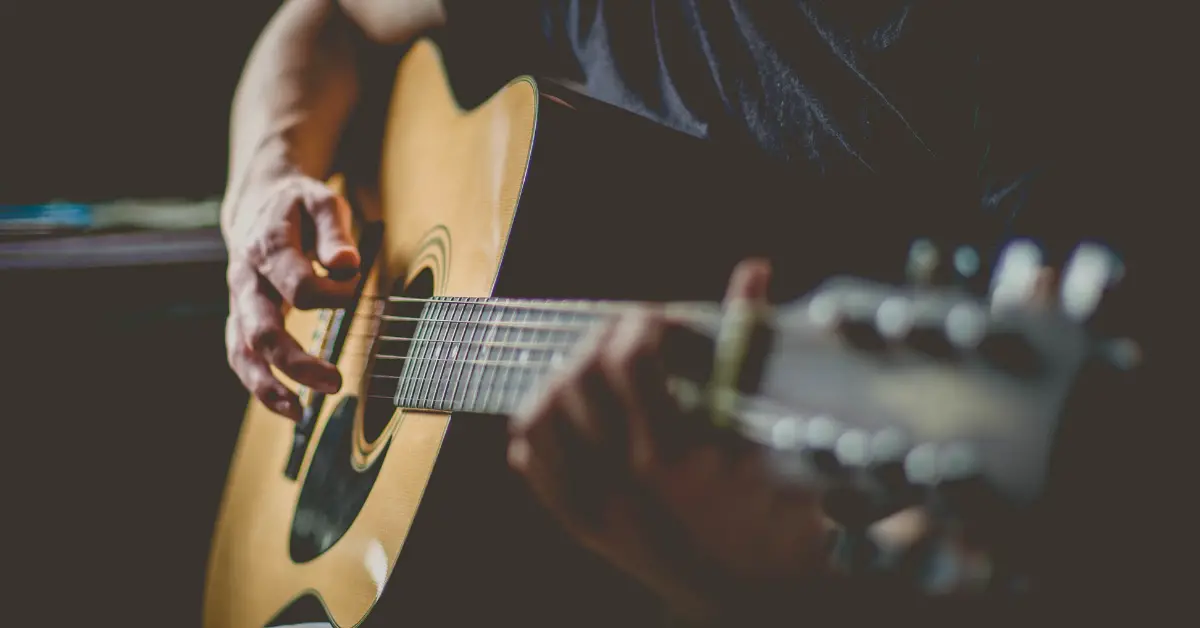
Have you ever recorded an acoustic guitar and feel like something's missing? Maybe it sounds a little thin or, worse, kind of muddy. Don't worry, you're not alone! Getting that perfect, full, and rich sound from your guitar can be tricky. But guess what? There's a secret weapon called EQ that can help you out. In this post, we'll break down some simple tips to use EQ like a pro and make your acoustic guitar sound amazing. Let's rock!

Imagine your guitar is like a singer. It has its own unique voice with different parts that make up its overall sound. Just like singers have high notes, low notes, and everything in between, your guitar also has different "frequency ranges" that contribute to its tone.
Think of frequency like the speed of sound waves. Low frequencies are slow and rumble, while high frequencies are fast and bright. An acoustic guitar typically covers a wide range of frequencies, starting from around 80 Hz, which is a deep, almost buzzing sound, all the way up to 20,000 Hz, which is super high-pitched and sparkly.
Here's a quick breakdown of how different frequency ranges affect your guitar's sound:

Now that you know your guitar's frequency range, let's talk about EQ, which is like having a bunch of knobs that control each of those frequencies. By adjusting these knobs, you can sculpt the sound of your guitar and make it sound fuller, richer, and just simply better! Here's what you need to know about EQing to achieve this.
| Frequency Range | Adjustment Type | Purpose |
|---|---|---|
| 240 Hz | Cut | Reduce muddiness and add clarity to the low end |
| 300 – 600 Hz | Boost | Increase body and warmth for thinner guitars |
| 600 – 800 Hz | Cut | Reduce mid-range competition with other instruments |
| 3.5 kHz – 5 kHz | Boost | Enhance clarity and add a sparkling high end |
Related Article: EQ Cheat Sheet | The Only Guide You'll Ever Need!

Now that you've got the basics of EQing an acoustic guitar, here are some bonus tips to help you become an EQ ninja:
Before you start tweaking the EQ, isolate your guitar track by soloing it. This helps you focus solely on its sound and make adjustments without being influenced by other instruments.
Acoustic guitars are notorious for producing resonant frequencies. To reduce these frequencies, you can use notch filtering. This technique allows you to precisely target these frequencies to clean up your audio.
Remember, your guitar is just one piece of the musical puzzle. Once you've EQed your guitar, compare it with the other instruments in the mix. Make sure it sits well within the overall soundscape and doesn't clash or get buried.
The acoustics of your recording space can also impact your guitar's sound. If you're struggling to achieve clarity, consider treating your room with sound-absorbing materials to minimize unwanted reflections.
While EQ can work wonders, the quality of your microphone and preamp can also play a role in capturing the true character of your guitar. Investing in good recording equipment can further enhance your sound.
EQ, or equalization, is the process of adjusting the balance between frequency components within an audio signal. For acoustic guitar, proper EQ is crucial as it allows for the enhancement or reduction of certain frequencies to achieve a full and rich sound that complements the mix.
A high-pass filter allows frequencies above a certain cutoff point to pass through while attenuating lower frequencies. On an acoustic guitar, it’s often set around 100 Hz to eliminate low-frequency rumble and muddiness, leaving space for bass instruments.
Room acoustics significantly impact the sound of the acoustic guitar, with factors such as room size, shape, and materials affecting reverberation, reflections, and overall tone. Proper microphone placement is necessary to mitigate any undesirable acoustic characteristics of the room during recording.
Factors like the quality of your guitar, microphone, and recording environment play a large role in how good your acoustic guitar recording will sound. EQ can usually just improve decencies, but not completely remove them. In situations where the recorded guitar doesn't sound great, just aim for making it sound better than when you started eqing it.
Presets can be a helpful starting point, especially for beginners. However, understanding the principles of manual EQ allows for greater control and fine-tuning the sound to your specific needs. Learning manual EQ empowers you to adapt to different situations and achieve personalized results.
So there you have it, music makers! You've unlocked the secrets of EQ and are ready to unleash the full potential of your acoustic guitar. Remember, practice makes perfect, so keep experimenting and have fun shaping your sound! And hey, if you discover any cool EQ tricks along the way, be sure to share them in the comments below. Let's rock this musical journey together!
If you found this guide helpful, please consider subscribing to our blog for more music production tips, product reviews, and buying guides. Also, you can support new content by contributing to our tip jar.
"Some of the links within this article are affiliate links. These links are from various companies such as Amazon. This means if you click on any of these links and purchase the item or service, I will receive an affiliate commission. This is at no cost to you and the money gets invested back into Audio Sorcerer LLC."